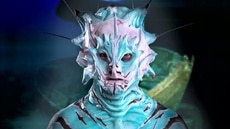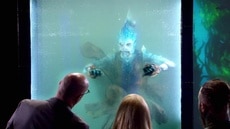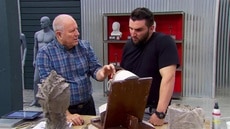Create a free profile to get unlimited access to exclusive videos, sweepstakes, and more!
New observations show the asteroid Hygiea is round!

Between the orbits of Mars and Jupiter is the main asteroid belt, composed of gazillions of objects, mostly made of rock and metal and, to a much smaller degree, ice. On the small end there's no real definitive limit; something the size of a basketball there may technically be an asteroid, I suppose. At the upper size range are objects hundreds of kilometers wide, including the largest object there, Ceres, at 940 kilometers in diameter. The second and third largest objects there are Vesta and Pallas (~525 and 510 km wide; note that both are oblong, so these diameters are averages).
Fourth is Hygiea. It's a bit more difficult to observe from Earth because it's smaller, but also because it's darker, making it dimmer, and has an orbit that takes it relatively farther out. Of the big rocks out there, it may be the least well studied.
However, astronomers have recently observed Hygiea using an amazing camera called ZIMPOL, part of a suite of camera called SPHERE on the aptly named Very Large Telescope. This provides stunning resolution — in fact, when it was used to look at other asteroid belt objects not long ago, I had to make sure the images were real!
But don't take my word for it! Here is their image of Hygiea:
Whoa. The resolution of their camera is incredible: 20 milliarcseconds, roughly the size of a US quarter seen from 250 kilometers away! So this is extraordinary, especially given that Hygiea is never closer to Earth than about 350 million kilometers.
There are lots of surprises in this image, but the big one is that Hygiea is round! Well, pretty round; it's not perfectly spherical. It's what's called a triaxial ellipsoid measuring about 450 x 430 x 424 kilometers. That's very close to being a sphere and is extremely unlikely to be an accident. Objects this size can compress themselves into a sphere via gravity (scroll down a bit in that link; I know it's about Star Wars but I talk about how this works there). It depends on what they're made of, though; ice is more easily deformed than rock, which itself is easier than iron. All three larger bodies in the asteroid belt are roughly spherical as well.
Interestingly, now that they found a size for Hygiea, previous mass estimates using various methods can be used to find its density. That's critical, because its density tells you what it's made of. It winds up being very roughly 2 grams per cubic centimeter, about what you'd expect for a mixture of rock and ice. It's also very close to the density of Ceres, which we know is a mixture of rock and ice! So it's possible the two formed in the same part of the solar system.
Relatedly, another surprise is that astronomers were expecting to see a huge impact crater, called a basin, on the surface, but none was seen. This is because Hygiea is the largest member of its family, a group of hundreds of asteroids that share a similar orbit. Many families of asteroids are known, and thought to have formed when a large asteroid got whacked by a smaller one, sending out debris. Hygiea has so many other asteroids in its family — if lumped together, they'd form a sphere 100 km across — that the impact would've been huge and should've left a substantial crater. Vesta has one, in fact.
They did find two large craters (which they called Serpens and Calix, after a serpent and cup, the symbols of health; Hygiea was the Greek goddess of health), 90 and 180 km wide, but neither is large enough to be from that impact. To explain this, the astronomers modeled a bunch of different impacts to see if they could replicate the event. They found that a head-on collision from something 75 km wide, or a grazing impact (at an angle of 40–60°) from something 50 km wide would produce the right amount of debris, and would also melt the parent body enough that it would reform itself into a rough sphere. It would also erase any previous surface features, which does seem to replicate what's seen with Hygiea.
The largest known family member after Hygiea is Giomus (though it may be an interloper), which is about 15 km wide. A head-on collision can produce intermediate size debris better than the bigger oblique impact, so they favor the smaller one in their conclusions.
So, about all this… both the paper and the press release make a big deal out of this, saying this makes Hygiea the smallest "dwarf planet." What follows is my opinion, so I want to be clear here: The fact that it is round is scientifically important. What we call it is not.
Why? Because I don't think the "dwarf planet" designation means much. A few years ago, the International Astronomical Union defined a planet as a body that orbits the Sun, is big enough that it forms itself into a sphere, and clears out its orbit of debris due to its gravity. Hygiea does the first two, but not the third, so according to the IAU it belongs in the dwarf planet subclass.
However, this definition is made up. It didn't follow from the science, it followed from a somewhat unresolved debate among scientists about how to define a planet, and it left a lot of people (including me) unsatisfied. After all, if Earth were out where Neptune is, it wouldn't be able to clear its orbit (there’s too much space out there) so by this definition it wouldn't be a planet. It would be a dwarf planet, despite being bigger than Mercury and Venus. Any definition that says being a planet depends on where you orbit strikes me as silly.
So planet and dwarf planet tell you as much about where the object is as what it is, and therefore isn't very useful. Also — and this is a big part of all this — the word "planet" isn't definable. It's concept, not a definition. For every definition you can come up with, I can come up with a counterexample that defies your definition (either you think it should be a planet when it clearly isn't, or you think it shouldn't be when it clearly is).
I get frustrated when people argue about whether Pluto is a planet or not because we don't have a good definition of what a planet is. We can't.
But speaking of all this, you may note I've been careful here not to call Ceres and Vesta asteroids. That's because planetary scientists think they are actually protoplanets: objects that were just starting to grow and become planet-sized, and ran out of building material (i.e., other asteroids) before they got very big*. This is a case where the terminology does have significance, because this distinguishes protoplanets from asteroids, which are pieces of rubble, shattered and broken, leftovers from the planetary formation process that never had a chance to become planets.
But again, these are not really definitions, more like designations to help you categorize these objects. Getting stuck on details and minutiae only leads to confusion and arguments over nothing. That's why I don't bother arguing about it.
So I'm not concerned over the idea that Hygiea might be a dwarf planet. What's important is that it's round, with only a couple of big craters and no big impact basin. That tells us a lot about its actual history and physical nature, and that's what science is all about.
*Of course, there are lots of asteroids still out there, but they're much smaller and too spread-out to be useful as construction material.






























